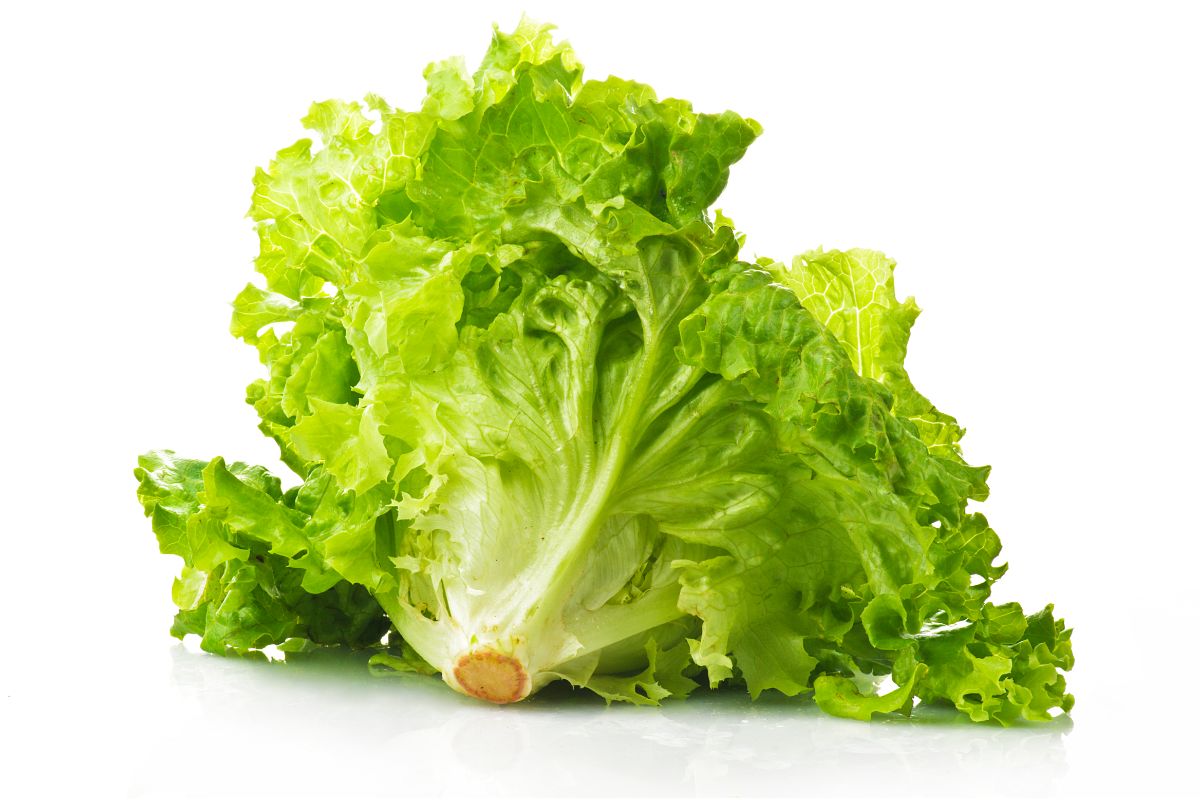The truth is when you’re finished cutting up all the lettuce you need for a meal, whether you’re preparing a salad, a few burgers, or a meat or seafood dish, it can be easy to place this plant to the side and forget about it entirely.

If you notice this quickly, you can simply place it back in the refrigerator so that it can remain fresh for you to use again down the road, but if it’s been left out for a few hours, or even days, then you may want to be a little more careful.
Here’s what you should know about leaving lettuce out in the open, and how long it will remain fresh before you might want to consider throwing it out.
How Long Will Lettuce Last When Unrefrigerated?
You ideally shouldn’t be leaving lettuce out in the open for any longer than 2 hours, and the reason for this is bacteria grow and spread rapidly on fresh produce, and while this might not be too harmful initially, it can quickly develop into E.coli or salmonella if it is left out for much longer than this.
You should be refrigerating lettuce within 2 hours of taking it out of the refrigerator, and while you can safely eat it if it has been left out within this timeframe, you will immediately notice the difference in taste and texture which will be a lot softer and nowhere near as crispy or flavorful.
How To Clean Left-Out Lettuce
If your lettuce has been left out for a little longer than 2 hours, this is enough time for bacteria to have started infesting the produce, so it’s worth giving it a quick clean just to make sure that it is entirely safe to eat.
To do this, you will want to create a mixture of 3 parts water and 1 part vinegar. Dunk the lettuce in the mixture for a few seconds, wash it, and then rinse it with cold water to make sure the sourness of the vinegar is completely removed.
How To Tell If Lettuce Has Gone Bad

If the lettuce has only been left out for up to 2 hours, it can be very difficult to notice any changes in its appearance or smell, but if you’re unsure how long a bag of lettuce has been left out, there are a few dead giveaways that signify it’s been exposed to bacteria for several hours and has gone bad.
The most obvious sign will be the leaves which will become soft, slimy, and heavily discolored, making them very unappealing to look at, and even worse to taste.
You should also always look for brown or black spots appearing around the leaves since this will indicate that the food is rotting and is inedible.
When lettuce has gone off and is no longer fresh, it will always begin to emit a very rancid smell which is very easy to notice considering that fresh lettuce should have little to no smell when you get near it.
The Best Way To Keep Lettuce Fresh
If you store lettuce in the refrigerator, it will remain fresh and safe to eat for up to 10 days, however, if you intend on using it for a recipe in the next few weeks and want it to last longer.
The best thing to do is line a plastic container or sturdy glass with a few paper towels and then scatter the lettuce over the top. Top it with a matching lid, and then place the lettuce in the refrigerator.
While this method may seem a little unnecessary at first, it actually ensures that a small amount of moisture gets to the lettuce while also encouraging proper air circulation which helps to keep the greens fresh and crispy.
By using this method, the lettuce will last between 2 to 3 weeks, so make sure to try it out if you intend to keep the lettuce fresh for a family meal or a barbeque that’s a few weeks away.
What Will Happen If You Eat Bad Lettuce?
This really depends on how long the lettuce has been left out and the amount of bacteria that has spread across the food, but the reality is whenever you ingest any amount of bacteria, you invite unwanted organisms into your body which must then be fought off, similar to if you had the flu.
Because of this, you can expect many of the same unpleasant side effects such as vomiting, diarrhea, nausea, and gastrointestinal pain, however, keep in mind that the effects can be even worse if the lettuce has begun rotting and contains harmful germs like norovirus, salmonella, and listeria.
Summary
Because lettuce is often a much smaller addition to a meal, it can be easy to misplace it during preparation, but always try to refrigerate it so that it doesn’t end up attracting nasty bacteria and germs so that the lettuce remains fresh and crispy when you come to use it again.
- How To Reheat A Cheesesteak - November 5, 2023
- What Are Three Must Have Kitchen Knives? - September 22, 2023
- How To Protect Edges Of Pie Crust - June 15, 2023








